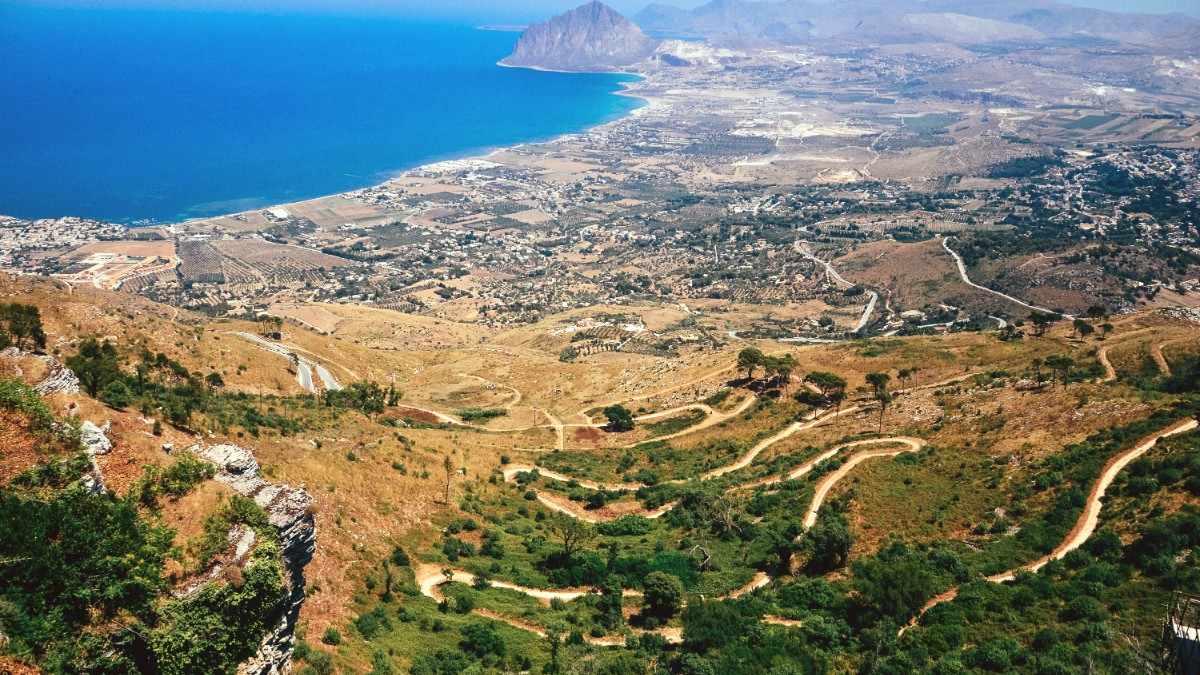
Sicily, Italy
Buses are the main form of public transport within Trapani, operated by AST (Azienda Siciliana Trasporti). Buses connect the city center with outer districts, the train station, and some nearby points of interest. They give an economical way to travel longer distances within the city.
The cable car (Funivia) connects Trapani to the medieval hilltop town of Erice. Funivia Erice operates this system. It presents a scenic and convenient way to reach Erice, giving panoramic views during the ascent and descent. This is a popular and recommended transport option for a day trip to Erice.
Bus: Purchase single bus tickets in advance from Tabaccherie, newsstands, or some cafes. Validate your ticket immediately upon boarding the bus using the machine near the door. Failing to validate leads to a fine. Day passes or multi-ride tickets may be available.
Buses: Generally operate from early morning (around 6:00 AM) until late evening (around 8-9 PM). Service frequency varies by route (20-60 minutes). Expect reduced service on Sundays and public holidays. Erice Cable Car: Operating hours vary seasonally. Generally 8:30 AM to 8:00 PM, with longer hours in summer and shorter hours in winter. Check the official Funivia Erice website; closes for high winds.
Public buses in Italy, especially older models, may not be fully accessible for travelers with mobility challenges. The Erice cable car, however, gives cabins designed to accommodate wheelchairs, making the trip to Erice accessible. Many historic sites in Trapani may have limited accessibility due to ancient structures, cobblestone streets, and lack of ramps or elevators.
Valid national driving license + IDP (for non-EU). Credit card for deposit. Minimum age 21. Major international companies at TPS and in city. Book in advance.
Available in shops. Helmet mandatory. Cost: €25-€50/day. Agility for narrow streets and coastal exploration.
Requires valid driving license. Experience recommended due to local driving styles. Helmets are provided. For experienced riders.
Available in several shops, including e-bikes. Cost: €10-€20/day. Flat terrain around salt pans presents good cycling.
Walking and cycling give engaging ways to experience Trapani's charm, letting you explore at a relaxed pace.
Drive on the right side of the road. Seatbelts are compulsory for all occupants. Mobile phone use is prohibited without a hands-free device. Speed limits are 50 km/h in urban areas, 90 km/h on provincial roads, and 130 km/h on Autostrade.
Road conditions in Sicily vary. Main roads and Autostrade are generally in good condition. Smaller provincial roads, especially in rural or mountainous areas, can be winding, narrow, and less well-maintained.
Drivers in Sicily are assertive and sometimes disregard traffic laws. Remain vigilant at intersections, roundabouts, and when changing lanes. Watch for scooters and motorcycles, which weave through traffic.
Finding parking can be challenging and expensive in central areas of Trapani. Look for designated parking lots or areas outside the ZTL.
Always carry some cash for bus tickets or small purchases, as not all vendors accept cards.
Quick & Easy
Validate your bus ticket immediately upon boarding to avoid fines. Look for the small yellow or orange validation machine inside the bus.
Avoid Fines
Use Google Maps or Moovit for real-time bus routes and schedules. These apps aid you determine the best route and departure times.
Smart Travel
For a smooth experience, always have some cash for small purchases and bus tickets. Validate bus tickets immediately to avoid fines.
Use navigation apps for real-time updates and familiarize yourself with the bus schedule, especially on weekends.